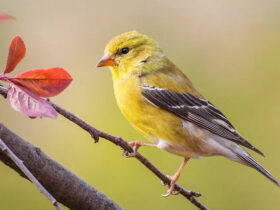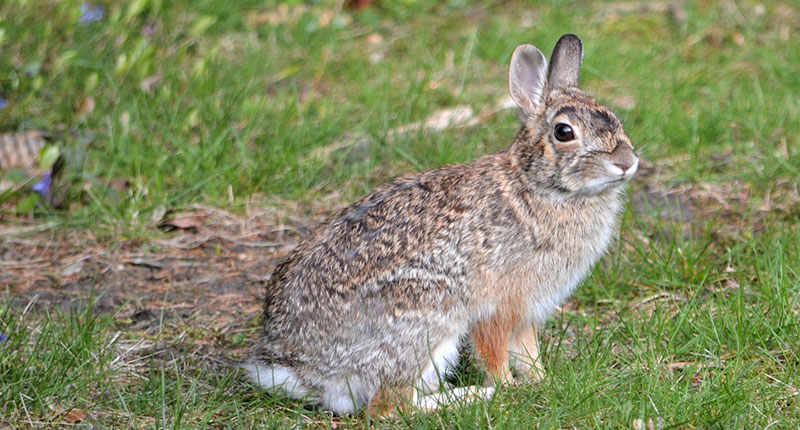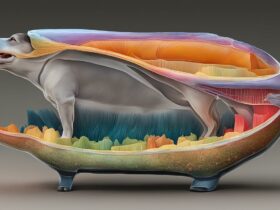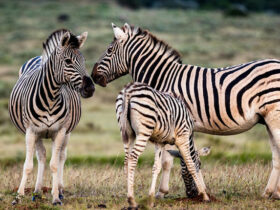The Eastern Cottontail Rabbit (Sylvilagus floridanus) is a common species found in various habitats across North America. This small mammal belongs to the family Leporidae and is known for its distinctive appearance and interesting behavior. In this article, we will delve into the characteristics and behavior of the Eastern Cottontail Rabbit, providing you with a comprehensive understanding of this fascinating creature.
The Eastern Cottontail Rabbit is a small mammal that inhabits a wide range of environments, including forests, fields, and suburban areas. Its physical appearance and behavior make it an intriguing subject for study and observation.
Physical Characteristics
Size and Weight
The Eastern Cottontail Rabbit is relatively small, measuring around 14 to 19 inches in length and weighing between 2 and 4 pounds. Females are usually slightly larger than males.
Fur and Coloration
This rabbit species has soft, dense fur, which is primarily brown or gray. Its underside and the inner side of its legs are white, providing a stark contrast to the rest of its body. The most distinguishing feature is its fluffy white tail, which resembles a cotton ball.
Habitat and Range
Eastern Cottontail Rabbits can be found in a variety of habitats, including meadows, brushy areas, woodlands, and even suburban neighborhoods. They have a wide distribution range across North America, spanning from southern Canada to South America.
Diet and Feeding Habits
Herbivorous Diet
The Eastern Cottontail Rabbit follows a strictly herbivorous diet. Its primary food sources include grasses, clover, dandelions, and various types of vegetation. They are known to be selective feeders, choosing the most nutritious plants available.
Foraging Behavior
These rabbits are crepuscular, meaning they are most active during dawn and dusk. They spend a significant amount of time foraging for food, using their sharp incisors to cut through vegetation. They also have a unique digestive system that allows them to re-ingest their fecal pellets to maximize nutrient absorption.
Reproduction and Life Cycle
Breeding Season
The Eastern Cottontail Rabbit has a breeding season that typically spans from early spring to late summer. During this time, males engage in intense competition to attract females, often resulting in territorial disputes.
Gestation and Birth
After mating, the female rabbit has a gestation period of approximately 28 days. She creates a shallow nest called a "form" in a secluded area, where she gives birth to a litter of 3 to 8 kits. These kits are born hairless and with closed eyes, relying on their mother for warmth and protection.
Development of Young
As the kits grow, they develop rapidly. Their eyes open within a week, and they start venturing out of the nest at around 2 to 3 weeks of age. By the time they are a month old, they are weaned and become independent.
Social Structure and Communication
Solitary Nature
Eastern Cottontail Rabbits are primarily solitary animals, except during the breeding season. They maintain separate territories and communicate through a combination of vocalizations and body language.
Vocalizations and Body Language
These rabbits use various vocalizations, including low grunts and high-pitched squeals, to communicate with each other. They also rely on body language, such as thumping their hind legs on the ground as a warning signal to other rabbits.
Predators and Defense Mechanisms
Natural Predators
The Eastern Cottontail Rabbit has several natural predators, including foxes, coyotes, owls, hawks, and snakes. These predators rely on their keen senses and stealth to catch rabbits.
Camouflage and Alertness
To avoid predation, these rabbits have developed effective defense mechanisms. Their fur provides excellent camouflage in their natural habitats, helping them blend in with the surroundings. They are also highly alert and possess great speed and agility, allowing them to quickly escape from danger.
Adaptations for Survival
Camouflaged Fur
The Eastern Cottontail Rabbit's fur coloration helps it evade detection by predators. The combination of brown or gray fur on the upper body and white fur on the belly provides effective camouflage against the background.
Speed and Agility
Rabbits are known for their incredible speed and agility. When threatened, the Eastern Cottontail Rabbit can reach speeds of up to 18 miles per hour, utilizing quick bursts of energy to evade predators.
Interaction with Humans
Human Encounters
Eastern Cottontail Rabbits are often encountered by humans in suburban areas, where they may venture into gardens or yards in search of food. Some people enjoy observing these rabbits in their natural habitats and even provide supplementary food sources.
Ecological Impact
As herbivores, Eastern Cottontail Rabbits play a role in shaping plant communities. Their feeding habits can influence vegetation growth and distribution, ultimately impacting the overall ecosystem.
Conservation Status
The Eastern Cottontail Rabbit is not currently considered a threatened species. Its adaptability to different habitats and its high reproductive rate contribute to its stable population.
Conclusion
The Eastern Cottontail Rabbit is a captivating creature with its unique appearance and behavior. Its fur, including the signature fluffy white tail, provides excellent camouflage, and its agility allows it to swiftly escape from predators. Understanding the characteristics and habits of this species enhances our appreciation for the natural world and the diversity it offers.
FAQs
Q1: What is the average lifespan of an Eastern Cottontail Rabbit?
- In the wild, Eastern Cottontail Rabbits typically live for about 1 to 3 years.
Q2: Are EasternCottontail Rabbits social animals?
- Eastern Cottontail Rabbits are primarily solitary animals, except during the breeding season. They maintain separate territories and are not known for social behavior.
Q3: Do Eastern Cottontail Rabbits hibernate during winter?
- No, Eastern Cottontail Rabbits do not hibernate. They are active throughout the year, adapting to seasonal changes by finding shelter and food in their habitat.
Q4: Are Eastern Cottontail Rabbits endangered?
- Eastern Cottontail Rabbits are not currently considered an endangered species. Their population remains stable due to their adaptability and reproductive capabilities.
Q5: Can Eastern Cottontail Rabbits be kept as pets?
- While some people may attempt to keep Eastern Cottontail Rabbits as pets, it is important to note that they are wild animals and have specific dietary and environmental needs. It is generally not recommended to keep them as pets













